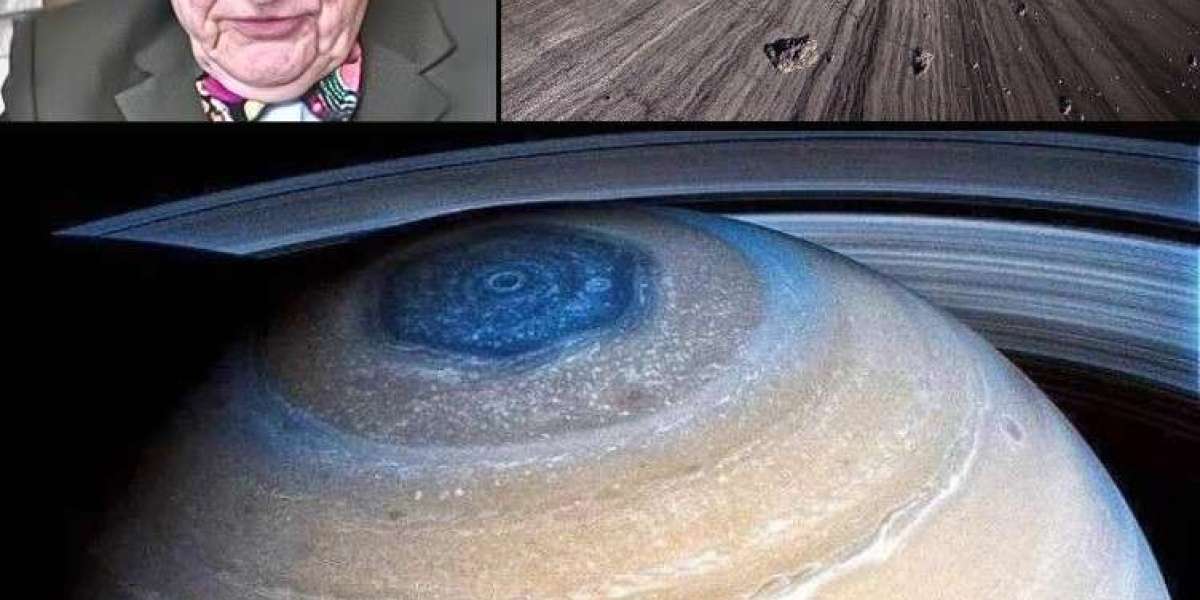When we think of Saturn, the planet’s magnificent rings are the first image that comes to mind. These shimmering bands of ice and dust orbiting the gas giant have fascinated astronomers for centuries. But not everyone agrees on what they are or how they formed. One of the most controversial alternative interpretations came from Dr. Norman Bergrun, an engineer who once worked on highly classified projects in aerospace. In his 1985 book Ringmakers of Saturn, Bergrun made claims that continue to circulate in UFO and alternative science circles today.
Norman Bergrun and the “Ringmakers”
Norman Bergrun (1921–2018) was a scientist and engineer with Lockheed Missiles and Space Company and later a researcher with the National Advisory Committee for Aeronautics (NACA, NASA’s predecessor). He contributed to several projects related to spacecraft, missiles, and thermal research.
In 1985, Bergrun published Ringmakers of Saturn, where he presented a radically different interpretation of the Voyager 1 and 2 data. His core claims included:
Saturn’s rings are not simply collections of ice and rock.
Instead, they are produced and maintained by gigantic, living, electromagnetic vehicles (EMVs), which he called the “Ringmakers.”
These craft were supposedly so large they spanned tens of thousands of kilometers.
The “exhaust” of these EMVs was responsible for the ring formations seen around Saturn.
He further suggested these vehicles were spreading to Jupiter and Uranus, creating rings around those planets as well.
Bergrun described these objects as “living” in some sense, not biological as we know life, but possessing some form of intelligence and self-sustaining energy.
While his claims were extraordinary and gained attention among UFO enthusiasts, they never gained traction in the scientific community.
Mainstream Science: What Saturn’s Rings Really Are
Mainstream planetary science paints a very different picture, supported by decades of observation and direct spacecraft exploration.
Composition
Saturn’s rings are primarily made of water ice particles, ranging in size from tiny dust grains to boulders several meters across. A small fraction of rock and dust is mixed in.
Origin
The leading theories for their origin are:
Destroyed Moon Hypothesis: A moon of Saturn wandered too close, within the planet’s Roche limit, and was torn apart by tidal forces.
Primordial Material: They may be remnants from the early solar system, leftover material that never coalesced into a moon.
Dynamics
The rings are structured into thousands of ringlets with gaps shaped by Saturn’s many moons. These moons act as “shepherds,” their gravity maintaining sharp edges and distinct patterns in the rings.
Resonances between the orbits of moons and ring particles also create wave patterns and density variations.
Micrometeoroid impacts continuously darken the rings, suggesting they may be relatively young (tens to hundreds of millions of years, not billions).
Confirmations from Space Missions
Voyager 1 & 2 (1980–81): Provided the first close-up views of Saturn’s rings, revealing intricate details.
Cassini Mission (2004–2017): Delivered the most detailed data ever, showing the rings’ composition, fine structures, and interactions with Saturn’s moons and magnetic field.
Cassini confirmed that the rings are not “exhaust” from electromagnetic craft but consist of natural material governed by physics and gravity.
Why Bergrun’s Claims Persist
Despite the overwhelming scientific evidence, Bergrun’s theories remain popular in UFO and fringe science communities. Reasons include:
His aerospace background, which gives his words credibility in the eyes of some.
The mysterious and visually stunning nature of Saturn’s rings, which invites speculation.
The appeal of alternative narratives that suggest our universe is more mysterious than mainstream science admits.
However, there has been no peer-reviewed support for his conclusions. Every major planetary science study supports the natural origin of the rings.
Conclusion
Norman Bergrun’s Ringmakers of Saturn remains a fascinating piece of speculative literature, blending science, imagination, and mystery. But mainstream science, backed by decades of data from Voyager and Cassini, provides a much more grounded explanation: Saturn’s rings are breathtaking structures of ice and rock, sculpted by gravity and time.
While we may not need “electromagnetic vehicles” to explain the beauty of Saturn’s rings, Bergrun’s ideas serve as a reminder of how awe-inspiring these cosmic phenomena are—and how the human imagination often stretches far beyond the bounds of evidence.
---
FAQ:
1. Who was Norman Bergrun and what did he claim?
Norman Bergrun (1921-2018), an aerospace engineer with Lockheed and NACA, proposed in his 1985 book Ringmakers of Saturn that Saturn’s rings are created and maintained by immense, living electromagnetic vehicles (EMVs), whose “exhaust” forms the rings—and that similar craft may have created rings around Jupiter and Uranus.
2. What are Saturn’s rings actually made of, according to science?
Mainstream science shows the rings are composed of water-ice particles—from dust to meter-sized chunks—with some rock and dust mixed in.
3. How did the rings likely originate?
Scientists think the rings formed either from a moon torn apart within Saturn’s Roche limit, or they’re primordial material left over from the early solar system.
4. What shapes the structure and appearance of the rings?
The rings feature thousands of ringlets and gaps shaped by Saturn’s moons (“shepherd” moons), orbital resonances, and micrometeoroid impacts—which darken the rings over time, suggesting they’re relatively young (tens to hundreds of millions of years).
5. Why hasn’t Bergrun’s theory been accepted by scientists?
Despite his aerospace background, Bergrun’s ideas gained traction only in UFO and fringe communities. No peer-reviewed evidence supports them; decades of spacecraft data from Voyager and Cassini confirm that the rings are natural, gravitationally governed structures—not EMV exhaust.








